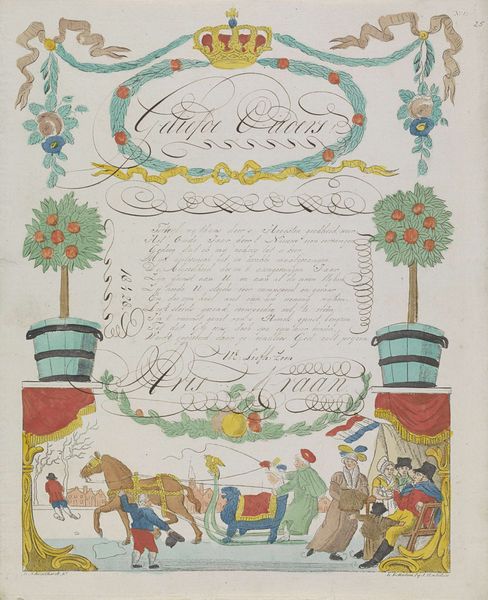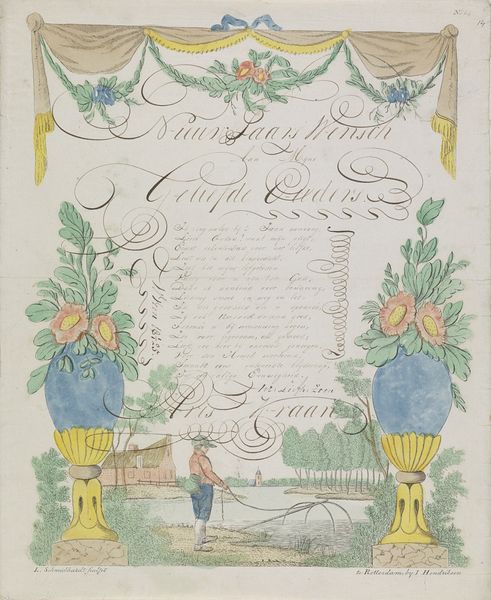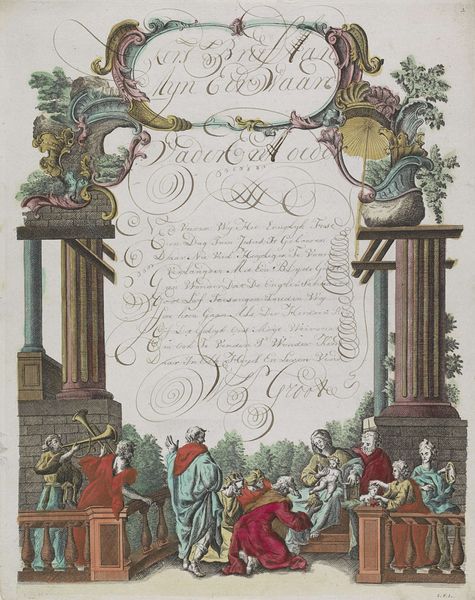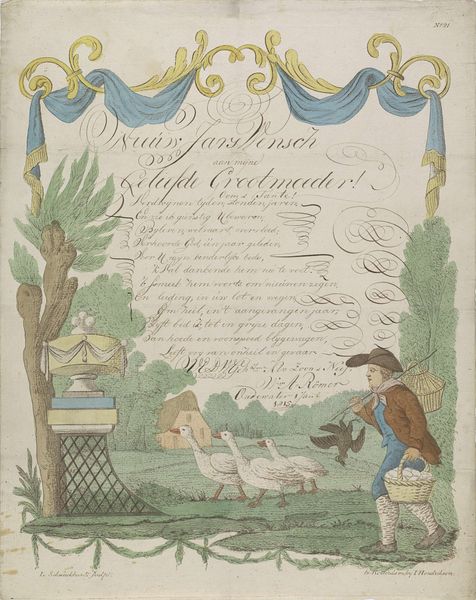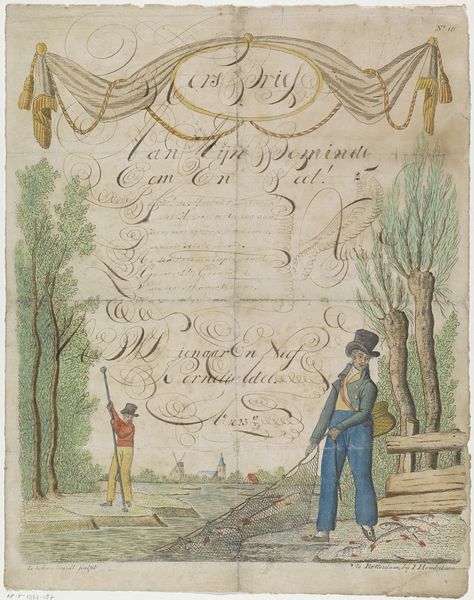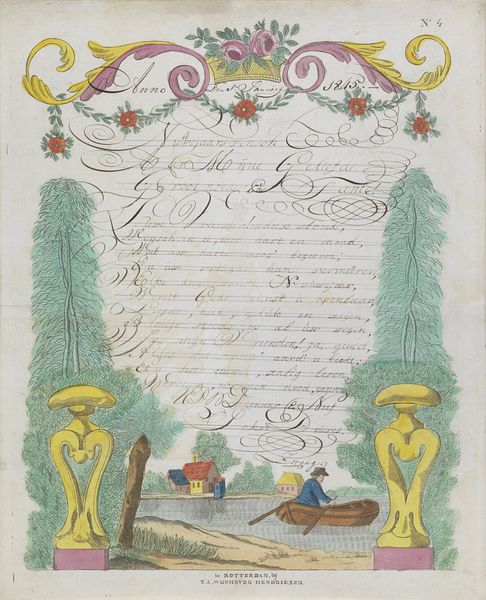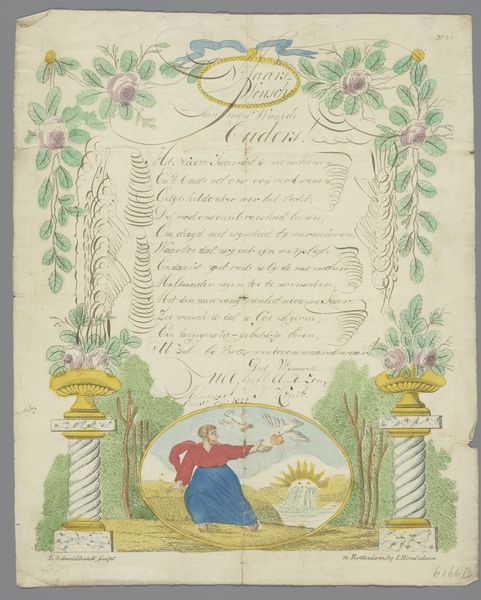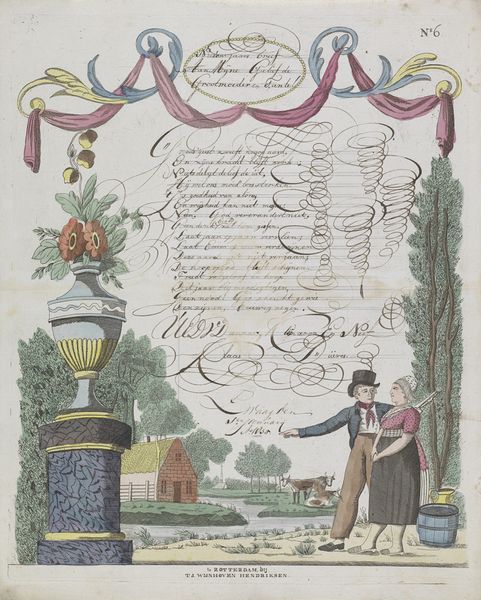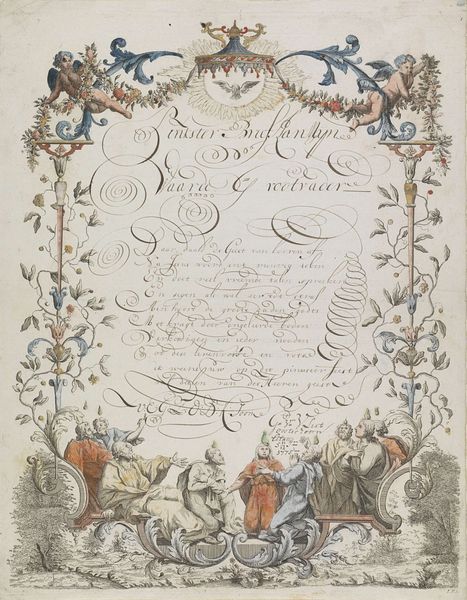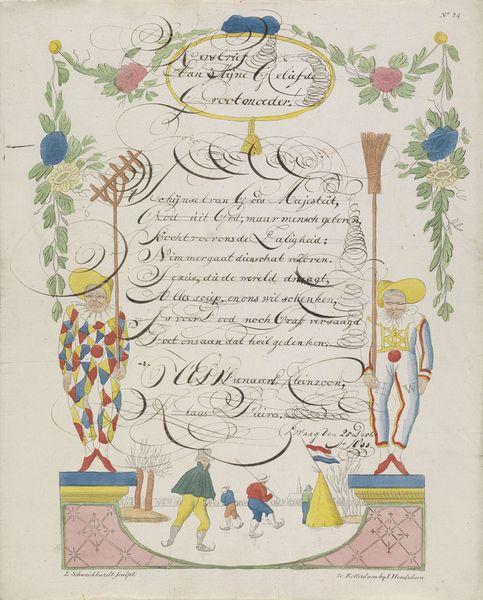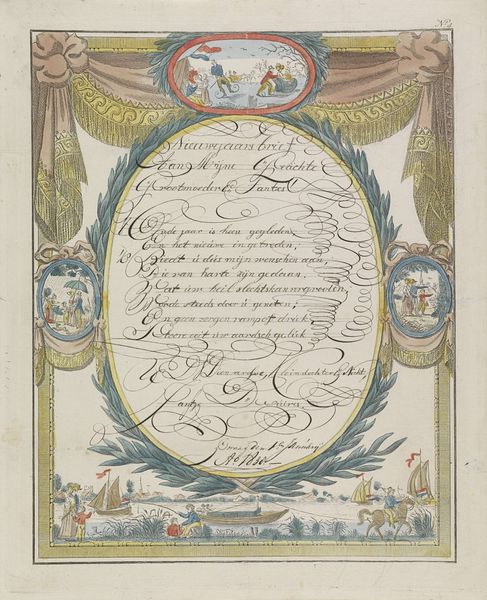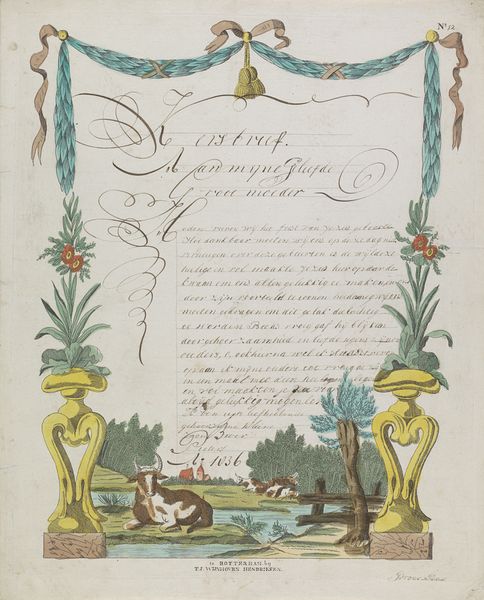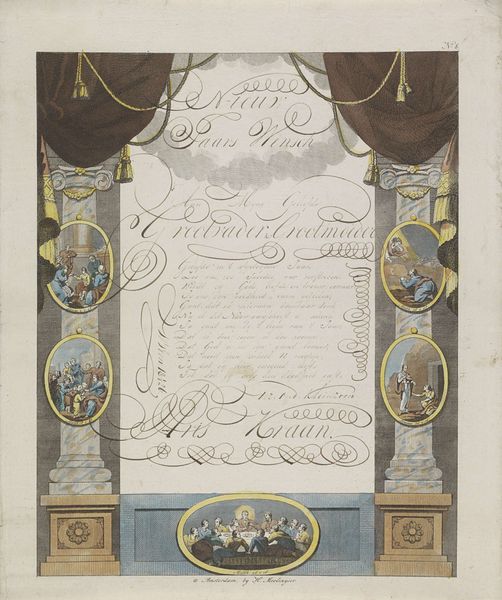
drawing, watercolor
#
drawing
#
water colours
#
narrative-art
#
figuration
#
watercolor
#
coloured pencil
#
romanticism
#
watercolour illustration
#
history-painting
#
watercolor
Dimensions: height 415 mm, width 332 mm, height 394 mm, width 320 mm
Copyright: Rijks Museum: Open Domain
Curator: This intriguing work is titled "Wensbrief met Alexander de Grote die Diogenes in de ton bezoekt," created in 1820 by Leonardus Schweickhardt. It’s rendered in watercolor, a medium allowing for delicate and translucent effects. Editor: My immediate reaction is one of gentle amusement. The composition feels theatrical, almost like a stage set, and the pastel tones evoke a whimsical atmosphere despite the gravity of the historical figures depicted. Curator: Indeed. The scene presents Alexander the Great's legendary visit to Diogenes. Observe the contrasting poses: Alexander, crowned and commanding, gestures expansively, while Diogenes resides within his barrel, his arm raised in a gesture we might interpret as either welcome or defiance. The composition is carefully structured, dividing the pictorial space symmetrically through those faux-marble columns. Editor: I'm drawn to the materiality of the work itself. As a 'Wensbrief', or 'Wish Letter', it hints at a broader context of production, perhaps artisanal. These are humble materials, watercolor and paper, used to depict grand historical themes, potentially crafted for a special occasion or a personalized exchange. Look at the texture achieved with watercolor washes layered with some coloured pencil for emphasis and the hand-written calligraphy above! It reminds us that this was made, gifted, and intended to be physically held. Curator: The columns certainly act as a framing device. They draw our eye into the scene, underscoring the encounter’s significance. But consider, too, the larger semiotic context of the imagery itself. The columns could imply classical virtue or, perhaps ironically, the pillars of society—against which Diogenes rebelled through his ascetic lifestyle. Editor: And those decorative elements framing the upper image, they remind us of this as a composite piece of stationary, not a monumental artwork meant to stand apart from everyday existence. Also note that some hand coloring accentuates key details of the black printed image. The work as an object seems meant to traverse the spaces between high ideals and tangible use. Curator: Ultimately, the success of Schweickhardt's watercolor lies in its ability to engage us both visually and conceptually, presenting an historical narrative within an allegorical framework. Editor: Absolutely. The layers of materiality and artistic labor invite reflection. Thinking about what sort of 'wish' was originally sent with it, one now lost, allows us a way to see what remains and envision what has disappeared.
Comments
No comments
Be the first to comment and join the conversation on the ultimate creative platform.

